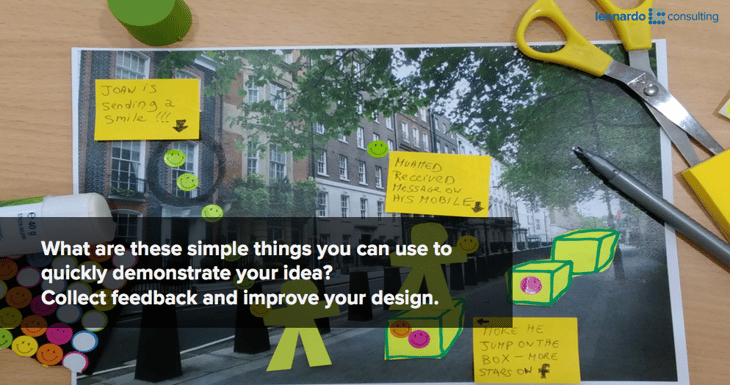
Before using a full-scale and full-blown solution design or product, your ideas need to be tested first in a quick and cheap manner using low fidelity prototypes. Prototypes are the less expensive and simpler versions of your solution or product that are used as a model to determine what still needs to be fixed, added or improved before your solution or product is realized.
Create the Best Innovative Solution Prototypes Easily
Prototyping business idea early and rapidly helps turn brilliant ideas into successful products or solutions. It helps detect and solve problems early on. When you prototype a business idea early, you are able to eliminate uncertainties and improve the accuracy of your idea. It also allows you to explore more ideas and exchange thoughts early on with concerned parties.
Prototyping decision matrix exist to help designer understand which type of prototype would work the best at a specific point of time of business development. Such matrix would identify the nature of prototype like service, product, system or space. This provides the pathway for multiple prototyping techniques.
Here is an overview of some prototyping techniques.
Choosing the Right Prototyping Tools
Prototyping tools help developers, project managers and web designers quickly get everyone on the same page. We’ve compiled a list of trusted and effective prototyping tools that can easily help you get ahead of the game.
Story Boards
This is the visual representation of a story.
Design challenges are first solved through this prototyping tool by using photos and graphic design elements. Because of its simplicity, this tool can be used by anyone. Facilitators don’t need to depend on other tools in executing this tool at the beginning, however once execution has begun, there might be a need to use other tools in the process and you’ll need to revise your storyboard. A story board makes use of a catchy and memorable title, and illustration titles to provide context about the task shown in the story.
System Maps
This tool is used when you need to accommodate a large number of interdependent tasks altogether.
You use this tool to develop, test and communicate your project until the end if your primary need has been identified as a system. When user experience is diverse and you need to understand the situation from various viewpoints that could not be explained using a story board, then this is the tool for you. This tool can be used by anyone and repeated experience using this tool increases the quality of understanding.
Experience Prototypes
This tool is best used by people who have basic understanding of user experience.
It is used to test offline and online information content and to understand interactive elements like voice, screen or written data. It can be used simply to demonstrate an idea to the potential users or stakeholders as well since it easily catches their first impression of the product or model.
Construction Iteration.
Low cost, low time, and low investment best describe this tool. It doesn’t require any specific skills for people to use it. Construction iteration is used to quickly understand the size and shape of product and space in the environment.
Service Image.
This tool is used to stimulate people’s visual capability around the most important elements of a system, product, space or service. Although you need a professional designer to execute this tool, you can still design a template that is as close to the final deliverable.
Conceptual Model
This tool is based on the idea that putting the solution on paper makes the solution more shareable.
To understand the ides of the different team members about an agreed solution, they use the conceptual model tool. People who use this tool should be patient, have an interest in detail design, and the ability to understand that a design could have varied conceptual models that need to be studied so they can choose the best one.
Mock-up
Mock-up helps in visualizing the final product, system, service or space.
Some mock-ups are used at the start to test different solutions while others are used at the end to render the final solution. High-quality mock-ups are challenging to develop because of the techniques involved, but quick mock-ups are easy to develop and helpful in understanding system=specific elements.
Learning from test
This said, developing multiples prototypes to create a design does not guaranty an optimal user experience unless prototype are constantly tested. The temptation is high to develop prototype isolate and expect the 'whaa!' effect from the user.
This does not work.
Prototyping is typically participative, the end user must be involved from the very beginning to create this complicity between the design and users.
We recommend to test prototypes early and thoroughly across multiple prototyping trial. You learn again and again perfecting prototypes from user’s feedback.




